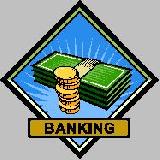
 |
|
| Financial Terms | |
| Net Present Value (NPV) Method |
|
Information about financial, finance, business, accounting, payroll, inventory, investment, money, inventory control, stock trading, financial advisor, tax advisor, credit.
Main Page: inventory control, stock trading, financial advisor, accounting, payroll, credit, business, money, |
Definition of Net Present Value (NPV) Method
Net Present Value (NPV) MethodA method of ranking investment proposals. npv is equal to the present value of the future returns, discounted at the marginal cost of capital, minus the present value of the cost of the investment.
Related Terms:NPV (net present value of cash flows)Same as PV, but usually includes a subtraction for an initial cash outlay. PV (present value of cash flows)the value in today’s dollars of cash flows that occur in different time periods. Adjusted present value (APV)The net present value analysis of an asset if financed solely by equity Bond valueWith respect to convertible bonds, the value the security would have if it were not convertible Book valueA company's book value is its total assets minus intangible assets and liabilities, such as debt. A Book value per shareThe ratio of stockholder equity to the average number of common shares. Book value Capitalization methodA method of constructing a replicating portfolio in which the manager purchases a  Carrying valueBook value. Cash-surrender valueAn amount the insurance company will pay if the policyholder ends a whole life Committee, AIMR Performance Presentation Standards Implementation CommitteeThe Association for Investment Management and Research (AIMR)'s Performance presentation Standards Implementation Conversion valueAlso called parity value, the value of a convertible security if it is converted immediately. Current rate methodUnder this currency translation method, all foreign currency balance-sheet and income Direct estimate methodA method of cash budgeting based on detailed estimates of cash receipts and cash European Monetary System (EMS)An exchange arrangement formed in 1979 that involves the currencies Exercise valueThe amount of advantage over a current market transaction provided by an in-the-money Expected valueThe weighted average of a probability distribution.  Expected value of perfect informationThe expected value if the future uncertain outcomes could be known Exposure nettingOffsetting exposures in one currency with exposures in the same or another currency, Extraordinary positive valueA positive net present value. Face valueSee: Par value. Firm's net value of debtTotal firm value minus total firm debt. Flow-through methodThe practice of reporting to shareholders using straight-line depreciation and Future valueThe amount of cash at a specified date in the future that is equivalent in value to a specified International Monetary FundAn organization founded in 1944 to oversee exchange arrangements of International Monetary Market (IMM)A division of the CME established in 1972 for trading financial Intrinsic value of an optionThe amount by which an option is in-the-money. An option which is not in-themoney Intrinsic value of a firmThe present value of a firm's expected future net cash flows discounted by the Investment valueRelated:straight value. Liquidation valuenet amount that could be realized by selling the assets of a firm after paying the debt. Loan valueThe amount a policyholder may borrow against a whole life insurance policy at the interest rate Log-linear least-squares methodA statistical technique for fitting a curve to a set of data points. One of the Market value1) The price at which a security is trading and could presumably be purchased or sold. Market value ratiosRatios that relate the market price of the firm's common stock to selected financial Market value-weighted indexAn index of a group of securities computed by calculating a weighted average Maturity valueRelated: par value. Monetary goldGold held by governmental authorities as a financial asset. Monetary policyActions taken by the Board of Governors of the Federal Reserve System to influence the Monetary / non-monetary methodUnder this translation method, monetary items (e.g. cash, accounts Net adjusted present valueThe adjusted present value minus the initial cost of an investment. Net advantage of refundingThe net present value of the savings from a refunding. Net advantage to leasingThe net present value of entering into a lease financing arrangement rather than Net advantage to mergingThe difference in total post- and pre-merger market value minus the cost of the merger. Net asset value (NAV)The value of a fund's investments. For a mutual fund, the net asset value per share Net assetsThe difference between total assets on the one hand and current liabilities and noncapitalized longterm Net benefit to leverage factorA linear approximation of a factor, T*, that enables one to operationalize the Net book valueThe current book value of an asset or liability; that is, its original book value net of any Net cash balanceBeginning cash balance plus cash receipts minus cash disbursements. Net changeThis is the difference between a day's last trade and the previous day's last trade. Net errors and omissionsIn balance of payments accounting, net errors and omissions record the statistical Net financing costAlso called the cost of carry or, simply, carry, the difference between the cost of financing Net floatSum of disbursement float and collection float. Net incomeThe company's total earnings, reflecting revenues adjusted for costs of doing business, Net investmentGross, or total, investment minus depreciation. Net leaseA lease arrangement under which the lessee is responsible for all property taxes, maintenance Net operating lossesLosses that a firm can take advantage of to reduce taxes. Net operating marginThe ratio of net operating income to net sales. Net periodThe period of time between the end of the discount period and the date payment is due. Net present value (NPV)The present value of the expected future cash flows minus the cost. Net present value of growth opportunitiesA model valuing a firm in which net present value of new Net present value of future investmentsThe present value of the total sum of npvs expected to result from Net present value ruleAn investment is worth making if it has a positive npv. Projects with negative npvs Net profit marginnet income divided by sales; the amount of each sales dollar left over after all expenses Net salvage valueThe after-tax net cash flow for terminating the project. Net working capitalCurrent assets minus current liabilities. Often simply referred to as working capital. Net worthCommon stockholders' equity which consists of common stock, surplus, and retained earnings. NettingReducing transfers of funds between subsidiaries or separate companies to a net amount. Netting outTo get or bring in as a net; to clear as profit. Normalizing methodThe practice of making a charge in the income account equivalent to the tax savings NPVSee: net present value. NPV profileA graph of npv as a function of the discount rate. Original face valueThe principal amount of the mortgage as of its issue date. Par valueAlso called the maturity value or face value, the amount that the issuer agrees to pay at the maturity date. Parity valueRelated:conversion value Payments nettingReducing fund transfers between affiliates to only a netted amount. netting can be done on Present valueThe amount of cash today that is equivalent in value to a payment, or to a stream of payments, Present value factorFactor used to calculate an estimate of the present value of an amount to be received in Present value of growth opportunities (NPV)net present value of investments the firm is expected to make Price value of a basis point (PVBP)Also called the dollar value of a basis point, a measure of the change in Purchase methodAccounting for an acquisition using market value for the consolidation of the two entities' Registered representativeA person registered with the CFTC who is employed by, and soliciting business Relative valueThe attractiveness measured in terms of risk, liquidity, and return of one instrument relative to Replacement valueCurrent cost of replacing the firm's assets. Residual methodA method of allocating the purchase price for the acquisition of another firm among the Residual valueUsually refers to the value of a lessor's property at the time the lease expires. Safety-net returnThe minimum available return that will trigger an immunization strategy in a contingent Salvage valueScrap value of plant and equipment. SIMEX (Singapore International Monetary Exchange)A leading futures and options exchange in Singapore. Simple compound growth methodA method of calculating the growth rate by relating the terminal value to Standardized valueAlso called the normal deviate, the distance of one data point from the mean, divided by Statement-of-cash-flows methodA method of cash budgeting that is organized along the lines of the statement of cash flows. Straight valueAlso called investment value, the value of a convertible security without the con-version option. Temporal methodUnder this currency translation method, the choice of exchange rate depends on the Terminal valueThe value of a bond at maturity, typically its par value, or the value of an asset (or an entire Time value of an optionThe portion of an option's premium that is based on the amount of time remaining Time value of moneyThe idea that a dollar today is worth more than a dollar in the future, because the dollar Utility valueThe welfare a given investor assigns to an investment with a particular return and risk. Value-added taxmethod of indirect taxation whereby a tax is levied at each stage of production on the value Value-at-Risk model (VAR)Procedure for estimating the probability of portfolio losses exceeding some Value additivity principalPrevails when the value of a whole group of assets exactly equals the sum of the Related to : financial, finance, business, accounting, payroll, inventory, investment, money, inventory control, stock trading, financial advisor, tax advisor, credit. |